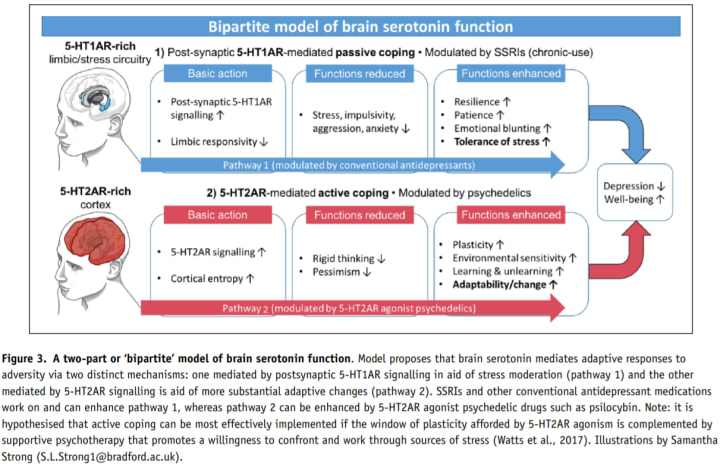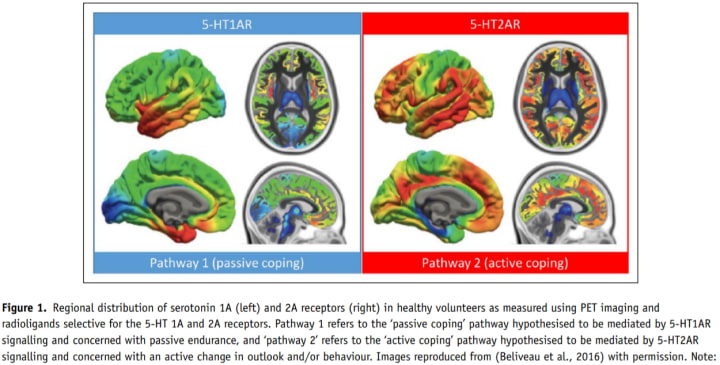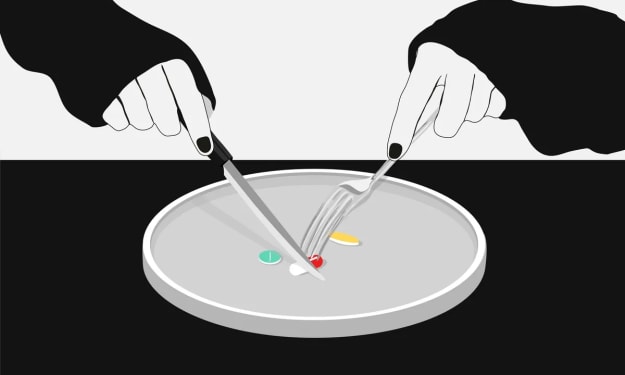Rethinking Brain Serotonin: What Does it Really Do? It’s Not Mood
Tackling “a major unresolved problem in neuropharmacology”— serotonin as a stress-coping mechanism, not mood control.

Google will tell you serotonin regulates mood (and other functions like appetite, social behaviour, sleep, etc.). The widely prescribed selective serotonin reuptake inhibitors (SSRIs) — for depression and anxiety — stop the clearance of serotonin to increase its levels. Do SSRIs work? Yes, modestly.
Serotonin and mood. Is that everything? No, according to a 2017 review in the Journal of Neuropharmacology, “Serotonin and brain function: a tale of two receptors.” It is written by two neuropsychiatrists at Imperial College London, Dr Robin Lester Carhart-Harris and Professor David Nutt. “This paper has sought to address a major unresolved problem in neuropsychopharmacology, namely what is the function of brain serotonin?”
It’s Stress-Coping, Not Mood Regulation
“There is a wealth of evidence that 5-HT [serotonin] is involved in the regulation of mood but exactly how it does this is not properly understood,” the review questioned. And they proposed that this how is actually by coping with stress. Serotonin helps cope with adversity, not mood control.
Which receptor the serotonin binds to is also important. Serotonin receptor 1A is for passive coping and receptor 2A for active coping. Their technical terms are 5-HT1AR and 5-HT2AR, respectively. (5-HT is 5-hydroxytryptamine, a biochemical name for serotonin, 1A and 2A are subtypes, and R is receptor).
They defined passive coping as “tolerating but not necessarily dealing with a source of psychological pain,” and active coping as “actively dealing with a source of psychological pain by changing one’s relationship to it.”
Under normal conditions, serotonin preferentially binds to the receptor 1A, so passive coping is the brain’s default mode. The receptor 2A becomes activated when serotonin levels rise. So, we want high serotonin levels to initiate both active and passive coping; otherwise, passive coping prevails. We want to be proactive in dealing with stressors too, not merely accepting it and then feeling helpless. Here is where mood comes in. We feel triumphant if we don’t let stressors control our lives.

Evidence for the Model: The Receptors
Let’s start with serotonin receptors. While scientists can agree on what the brain dopamine does, most still find serotonin puzzling. And this is due to the many serotonin receptor subtypes. There are 14 serotonin receptors — 1A, 1B, 1D, 1E, 1F, 2A, 2B, 2C, 3, 4, 5A, 5B, 6, and 7 — characterized so far. Each has different biological functions, although some overlap, as compiled in a comprehensive Wikipedia table.
“The notion that 5-HT [serotonin] is an enigma among neuromodulators (said to be ‘involved in everything but responsible for nothing’) is relevant here,” the review said. “And it is argued that the riddle of 5-HT [serotonin] can only be solved by focusing on its individual receptor subtypes.”
The review argued that not all serotonin receptors are created equal. The serotonin receptors 1A and 2A are especially widespread in the brain. Specifically, receptor 1A is localised in the limbic system and 2A in the cortex. (More on the evolutionary significance of the cortex and receptor 2A later).

Evidence for the Model: The Behaviour
Lower brain serotonin levels or a tryptophan-deficient diet closely associate with impulsivity, aggression, suicidality, poor memory, neuroticism, little motivation and confidence, emotional lability, anxiety, and depressed mood. As follows, the opposites of these behaviours can be induced with tryptophan supplementation or drugs increasing brain serotonin. And these behavioural effects from altered brain serotonin levels can be reproduced with drugs (antidepressants or psychedelics) or genetic modifications (in mice) that alters the expression of receptors 1A and 2A.
Although they are conflicting findings in humans, what was said is the overall picture of the massive serotonin literature, the review authors said.
(Tryptophan is an essential amino acid that the body cannot make on its own. It is a biochemical precursor to serotonin, so it crosses the blood-brain barrier to become serotonin.)

To reiterate, serotonin prefers binding the receptor 1A in the limbic system. The brain is on a passive coping mode by default. Low brain serotonin then means less activity of receptor 2A in the cortex; active coping becomes idle. As the illustration above describes, the ideal situation is to engage both passive and active coping. And this is achieved with sufficiently high serotonin levels.
Psychedelics and Serotonin Receptor 2A
Mounting evidence suggests that psychedelics — such as psilocybin — that magnify the expression of serotonin receptor 2A fare better than standard antidepressants like SSRIs. “These findings motivate a revision of the conventional view that psychedelics are harmful to mental health,” the review affirmed. “And encourage a rethink on the role of 5-HT2AR [serotonin 2A recpetor] signalling in the pharmacology of depression.”
Elemental has previously expanded on the antidepressive effects of psilocybin, explaining that “psilocybin helps you find a way out of your suffering rather than padding the cage.” And this is undoubtedly akin to active coping.
“These drugs may, therefore, justifiably be considered ‘unveilers of function’. Note: the term ‘psychedelic’ literally means ‘mind-revealing’,” said the review authors who also pioneered the research of psychedelics and antidepression.
Evolutionary speaking: “By bodyweight, humans have vastly more cortex than other species (where 5-HT2ARs are densest) and our remarkable adaptability is one of our most defining species traits — as is our sense of self,” they wrote. “It has been hypothesised by a popular proponent of psychedelic drug-use (Terrence McKenna) that ingestion of naturally occurring psychedelics (e.g. psilocybe mushrooms) catalysed the evolution of the human neocortex.”
While psychedelics also act on other serotonin receptors to some extent, “we wish to emphasise that the evidence is compelling that 5-HT2AR [serotonin 2A receptor] agonism is key to psychedelics’ most characteristic effects,” the authors stated. (In biology, agonism means receptor binding and activation.)
This concept is maintained to this day. “Outcomes of neuroscience and clinical research into 5-Hydroxytryptamine 2A (5-HT2A) receptor agonists, such as psilocybin, show promise for addressing a range of serious disorders, including depression and addiction,” a 2020 review in Cell stated.
The Real Function of Serotonin in the Brain
While there are 12 other serotonin receptors, “we chose to focus on the 5-HT [serotonin] 1A and 2A receptors because we felt that the functions associated with their signalling give the most comprehensive perspective of the general functioning of brain serotonin transmission,” the review argued.
“This paper has sought to address a major unresolved problem in neuropsychopharmacology, namely what is the function of brain serotonin?” The answer is, they wrote, “to enhance adaptive responses to adverse conditions.” Once again, according to the illustration above:
Serotonin receptor 1A in the limbic system mediates passive coping. It increases resilience, patience, and stress tolerance. It also lowers anxiety, impulsivity, and aggression.
Serotonin receptor 2A in the cortex mediates active coping. It increases environmental sensitivity, learning and unlearning, and adaptability. It also lowers rigid thinking and pessimism.
In short, serotonin is the brain’s stress-coping mechanism, which dictates the overall mental well-being.
About the Creator
Shin jie Yong
MSc (Research) | 13x (10x first-author) academic papers | Independent researcher and science writer | Named Standford's world's top 2% of most-cited scientists | A powerlifter with national records






Comments
There are no comments for this story
Be the first to respond and start the conversation.